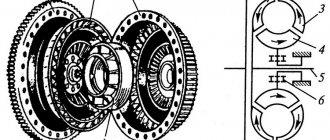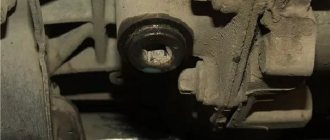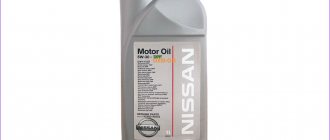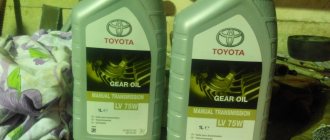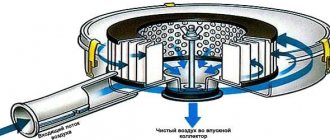The automatic transmission is good to operate, but expensive to repair. A competent and timely oil change in this unit will help extend the life of the automatic transmission.
Operating instructions for cars aged 20 years or more usually indicate an automatic transmission oil change interval of 30-40 thousand km. However, many automakers say that the automatic transmission of a modern car does not require an oil change and is generally maintenance-free. There are several reasons for this.
The engine operates at temperatures above 100C0. Motor oil becomes contaminated with combustion products, and natural loss occurs due to waste. Automatic transmission oil is not subject to this risk. Unlike the engine, the gearbox operates in a more gentle mode.
Over the past decades, the oils themselves have changed. If previously they used mineral ones, now they use semi-synthetic or synthetic ones. Such liquids retain their working qualities for a long time.
The next reason is related to the influence of marketers. The fact is that now an important characteristic of a car is the cost of its maintenance. Therefore, marketers strive to eliminate unnecessary service operations. They assume that they buy a car for about 5 years. Indeed, this time the oil in the box is working properly. As a result, changing the automatic transmission oil does not appear in the list of operations.
Basic properties and characteristics of technical oils in the machine
The manufacturer constantly tests lubricants in order to determine the oil most suitable for use in an automatic transmission. At the same time, the optimal timing for replacing the lubricant is also established.
The functions of an automatic transmission include transferring the power of the power unit to the wheels of the car to overcome a certain section of the road. In this case, part of the engine energy and the volume of transmission oil is spent on reducing internal friction between the working parts and automatic transmission components.
If low-quality lubricants are used, the oil quickly heats up, oxidizes, and corrosion of automatic transmission elements and the entire vehicle occurs.
High-quality lubricating fluids for cars with automatic transmission actively resist oxidative processes and prevent the appearance of corrosion spots inside the automatic transmission.
Transmission oils can withstand high temperature changes and do not boil, creating the necessary coefficient of performance (COP) of the vehicle transmission.
Why does transmission fluid deteriorate?
Old oil in automatic transmission
Gradually, any lubricant loses its original properties, as the liquid overheats under the influence of operating conditions (especially in city traffic jams). This can be caused by contamination of the radiator, which is needed to cool the lubricant. Also, the composition of the fluid in the transmission changes because of this, because tiny particles from wear on the friction plates and torque converter elements are added to it.
In this regard, the oil in the automatic transmission must be changed regularly. This needs to be done urgently if the lubricant smells like burning or has become visually very dirty. Even if the fluid looks normal, if it has served its intended purpose, be sure to replace it.
How to check the oil in an automatic transmission
While operating the vehicle, it is recommended to regularly check the amount of lubricant. This can be done with or without a special probe.
Before checking the transmission oil, the automatic transmission is heated to 650 C. To do this, you will need to drive the car 10-15 kilometers. Or, turning on the power unit, standing still, wait for the fan to start working. In this case, the coolant temperature reaches 90-950 C. The vehicle’s automatic transmission shift lever is placed in the neutral position, and the parking brake is engaged. The lubricant level is checked with the power unit running.
Draining oil through the plug
Let's merge! If your box has a drain plug at the bottom, first place some large container under it. Usually, its role is played by cut-off plastic canisters, taking into account that several liters of fluid will come out of the transmission (about 3 to 5). Next, unscrew this drain plug and oil will flow out of the neck by gravity. And now you just have to wait until all the liquid that can leak out, accordingly, flows out. After this, screw the drain plug back on. Count the amount of oil drained from the transmission - you will now need to pour the same amount of new fluid inside.
Automatic transmission ZF 6HP. Device and typical malfunctions.
Checking lubrication without a dipstick
Some cars equipped with automatic transmissions do not have a dipstick. Instead, there are two holes: for filling and draining the working fluid. Cars of this design are designed for service in service centers.
For boxes without a dipstick, a special limiter for the amount of working product is provided in the drain hole. This long tube works on the principle of draining excess into the pan of the car. Consequently, the level is determined by the height of the limiter, which eliminates ATF overflow.
Checking transmission oil is a labor-intensive process. Not everyone will be able to say exactly what quality of lubricant is in the automatic transmission and what quantity is left. Therefore, it is better to entrust the inspection to service station specialists.
The verification process is as follows:
- The automatic transmission warms up to a certain t0 (see instructions above).
- The car is placed over the repair pit.
- The automatic transmission gear shift lever is set to the neutral position.
- The power unit does not turn off.
- The oil pan drain plug is unscrewed.
- When performing the above steps, a small amount of liquid should spill.
If this does not happen, then its quantity is below the required norm.
It is important to regularly check the oil level in order to avoid repairs to the unit and extend the operational life of the automatic transmission.
When do you need to change the transmission oil in an automatic transmission?
The frequency of changing transmission oil depends on the make of the car, the year of manufacture of the vehicle and the design of the automatic transmission.
How often to change automatic transmission oil. The fluid should be changed after traveling 50-60 thousand km under normal operating conditions. If the car mostly works in intensive mode, on poor-quality road surfaces, replacement can be performed more often: after about 30 thousand km.
How to replace machine lubricant
Replacing the lubricant in the automatic transmission can be complete or partial. The latter is done when the car owner simply needs to add fluid so that the machine can “live” another 20 thousand kilometers until it is completely replaced, without global damage to the mechanical parts.
Step-by-step instructions for partial replacement
In order to partially replace the fluid, it is necessary to prepare the following elements:
- a container with measurements to understand how much was drained;
- new lubricant;
- funnel.
Partial replacement proceeds as follows:
- Drive the car onto the overpass.
- Leave the engine running and drive the gearbox through all speeds while pressing the brake pedal.
- Turn off the motor.
- Remove the fluid drain plug on the transmission pan.
- Place the measuring container and wait until the oil has completely drained into it.
- Screw in the drain plug.
- Using the measurements, determine the amount of leaked oil and, inserting a funnel into the filler hole, add the required amount of new lubricant.
- Turn on the engine.
- Drive the automatic transmission through all gears again so that the two types of fluid mix with each other.
You can determine the fluid level using a dipstick. If there is not enough lubricant, add more.
Complete replacement
A car enthusiast can completely change the oil to a new one at a service station if the car owner is not sure that he can handle it himself. The owner of the car must determine how long it takes to completely change the oil, guided by the diagram described above.
Items that will be needed during a complete oil change in an automatic transmission:
- new ATF;
- measuring container;
- rubber gasket;
- sealant;
- partner;
- new filter.
Read
Complete and partial do-it-yourself oil change in automatic transmission Toyota Corolla E150/E120 body
How the replacement works:
- Drive the car for five kilometers to warm up the machine thoroughly.
- Stand on the overpass.
- Remove the drain plug and place a container under the pan.
- Wait a while until all the oil has drained out.
- Remove the screws from the tray and carefully set it aside. It may contain an additional half liter of dirty oil.
- Clean the pan from soot deposits and metal shavings. Remove the old gasket and install a new one. Wipe the inside of the tray dry with a lint-free cloth.
- Install a new filter.
- Apply silicone to the pan gasket and screw it to the bottom of the car.
- Tighten the plug and pour in new oil. You will need as much of it as was poured into the measuring container.
- Remove one cooling hose, which is located in the direction of travel, and insert it into the prepared five-liter bottle.
- At this time, the partner must put the car on the handbrake and the automatic transmission switch to neutral speed. Start the engine. The old oil, which is pressed through by the newly refilled oil, will be drained into the bottle using a hose. Drain until the oil turns light. This means that something new has happened. This can stop further drainage.
- Add the same amount as drained.
- Re-tighten the car cooling hose.
- Drive the car for five kilometers and check the level. If necessary, top up.
Complete technical oil change.
In this option, it is preferable to contact the service center specialists, since the work will require special equipment. Changing an old product to a new ATF is carried out under a certain pressure. Control is carried out by the color of the transmission oil. When the ATF color at the outlet and inlet becomes the same, the replacement process can be completed.
Prices for complete oil change services are not the same everywhere, but on average they are affordable. In this matter, it is necessary to put the quality of the process first, not the cost of the work.
Looking for particles in the oil
A very important point. If foreign particles are found in the liquid itself - dirt and metal dust, or even shavings, this is a sign that our box is seriously worn out and requires repair. If your oil is in this condition, most likely you are already complaining about incorrect operation of the transmission.
And another thing is that the automatic transmission has its own oil filter, which retains these wear products, but when this filter becomes clogged, the box will begin to starve of oil. With all these problems together, it won’t seem enough to anyone, neither your box nor your wallet.
Imagine, if this filter is so “tired” that it is already allowing oil and debris into the system (after all, that’s where you took the oil from), then what happens to the units inside the automatic transmission?
But it was worth just changing the oil on time...
What kind of oil to fill in automatic transmission
First of all, you need to decide on the frequency of replacement, and then look at how much oil you need to fill. When purchasing oil, refer to the service book for answers. If the car is purchased second-hand and the book is missing, the manufacturer’s manual is used as a basis. Why reinvent the wheel, the developers provide full information about replacement periods and indicate which oil to use in the automatic transmission.
Manufacturers from the Land of the Rising Sun recommend replacing ATF after 20 thousand km of vehicle mileage. In Europe, technical oil changes are carried out after 40-50, respectively. Many manufacturers recommend homemade oil. The most common are:
- transmission mineral lubricants;
- semi-synthetic products; synthetics;
- universal oils.
Today, many leading manufacturers recommend their own brand Automatic Transmission Fluid:
- Mercedes cars use ATF MERCEDES automatic transmission fluid.
- The German concern BMW recommends ZF brand oil for its cars.
- The Toyota company offers to pour a lubricant into Toyota ATF TOYOTA TYPE cars.
- A separate lubricant mixture has been developed for Lexus - “WS”.
- The VOLKSWAGEN GROUP recommends using its own product for Audi, Skoda and Volkswagen cars: “G-052, G-053 – G-055” or “ZF” brand lubricant, intended for middle-class cars. For cheaper cars, “ESSO” is suitable.
- The Chevrolet company offers to fill cars with Dextron 6 oil. The manufacturer recommends using Mobil DEXRON-VI ATF, ZIC DEXRON-VI for cars with automatic transmission.
- The Nissan concern has developed its own transmission oil “Nissan Matic” for its cars with automatic transmissions Nissan, Infiniti, Datsun.
- KIA and Hyundai did not stand aside and prepared the Hyundai ATF SP-III brand trademark. In addition, for cars with automatic transmission, you can use ZIC ATF SP-III.
Tricky job of marketers?
Yes. As you already understand, manufacturers of cars (not boxes) are once again trying to bend us and, it is worth saying, they are doing it quite successfully, since, judging by their experience in selecting used cars, owners are already moving away from the rules generally accepted in the old days. By 100 thousand km, many so-called maintenance-free boxes are already starting to kick you in the back. Moreover, the same automatic transmission on different models may be serviceable in one case, but not in another. And all just because the first one is still concerned about quality, and the second one doesn’t care anymore.
An automatic machine that has never had a lot of changes, in troubleshooting
The reliability race is over. Even Toyota decided to make money on spare parts. Now there is neither Japanese nor German quality - there are strategies to extract money from car enthusiasts. Whoever approaches deception more cunningly and sophisticatedly will win in the financial field. Just imagine how important it is for them that you come more often for a new car or come for major repairs.
Reputation? Who is interested in it today if some German brands, mired in general deception, still do not suffer from a shortage of customers? As they say, in order not to worry about your reputation, you need to ruin it once.



